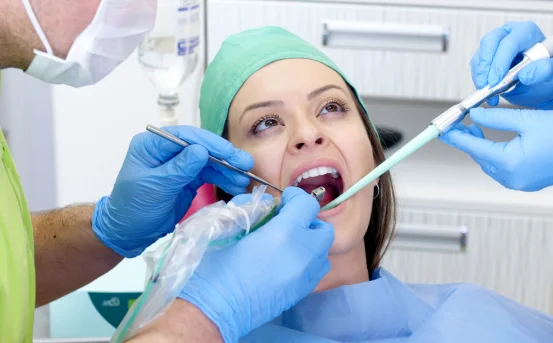Hyperlipidemia, which is also known as high cholesterol, is a medical condition characterized by high concentrations of fat (lipids) like cholesterol and triglycerides in the bloodstream. While cholesterol serves many useful purposes in the body, having too much of it greatly increases the chances of developing heart diseases, strokes, and other major cardiovascular problems.
With sedentary lifestyles, poor diets, and family history, more and more people are becoming hyperlipidemic. This makes understanding preventive measures in hyperlipidemia so critical. The holistic approach of diet and lifestyle changes can significantly control risk factors and cholesterol levels.
Importance of Preventive Measures in Hyperlipidemia
Preventing hyperlipidemia is not just about avoiding medications or health concerns down the line; it means preserving cardiovascular health for the long term. Undiagnosed or poorly treated hyperlipidemia can gradually lead to silent but aggressive damage to the arteries, resulting in atherosclerosis, heart attacks, and strokes.
Why prevention is important:
- Hyperlipidemia is often asymptomatic
- May begin developing in the early stages of life
- Genetic factors may complicate the condition without clear symptoms
- Lifestyle changes can reverse or decelerate progression
1. Heart-Healthy Diet
Emphasize:
- Whole Fruits and Vegetables: Help lower LDL cholesterol and provide antioxidants, fiber, and vitamins.
- Whole Grains: Improving lipid profiles include oats, quinoa, barley, and brown rice.
- Fats: Healthy unsaturated fats such as olive oil, avocados, nuts, and seeds.
- Omega-3 Fatty Acids: Found in fatty fish, salmon and mackerel, reduces triglycerides and inflammation.
void:
- Trans Fats: Common in processed snacks, fast foods, and baked goods.
- Saturated Fats: Limit red meat, butter, and full-fat dairy.
- Refined Sugars and Carbohydrates: Increase triglycerides and lead to metabolic syndrome.
- Tip: Incorporate cholesterol-lowering foods like flaxseeds, soy products, and legumes into daily meals.
2. Regular Physical Activity
Engaging in moderate to vigorous physical activity for 30 minutes on most days helps raise HDL cholesterol while lowering LDL and triglycerides.
Suggested Activities:
- Brisk walking
- Cycling
- Jogging
- Swimming
- Yoga and resistance training
Exercise also helps with weight management, enhances insulin sensitivity, supports heart health, and helps prevent hyperlipidemia.
3. Healthy Weight Management
Obesity, particularly central obesity, in which fat accumulates around the waist, is associated with elevated triglycerides, depressed HDL cholesterol, and insulin resistance. Maintaining a healthy weight, or even a modest weight loss of 5-10%, can substantially benefit your lipid profile.
Actionable Tips:
- Monitor Body Mass Index (BMI)
- Avoid extreme or crash diets —aim for long-term sustainable changes.
- Use diet and exercise in tandem, not one without the other.
4. Smoking Cessation and Alcohol Reduction
Smoking:
- Low HDL cholesterol
- Elevated LDL and oxidative stress,
- Harm to blood vessel walls.
Quitting can rapidly improve cholesterol levels and lower heart disease risk.
Alcohol:
Moderate alcohol consumption, particularly red wine, could be mildly cardioprotective. However, excessive straining can elevate triglycerides and liver fat.
Suggested limits:
- Men: Up to 2 drinks/day
- Women: 1 drink/day
Or better yet, heart-healthy, alcohol-free options.
5. Regular Monitoring of Lipid Profile
Hyperlipidemia can be preempted and monitored with routine blood work. Adults should check their lipid profile every 4-6 years, or more frequently if they have risk factors such as diabetes or a family history.
Lipid Profile Includes:
- Total Cholesterol
- LDL Cholesterol
- HDL Cholesterol
- Triglycerides
Tracking these levels help customize prevention efforts and assess ongoing evaluation.
6. Control Other Health Issues
The following conditions may increase the risk of high cholesterol:
- Type 2 Diabetes
- Hypothyroidism
- Kidney disease
- Polycystic Ovary Syndrome
These health conditions can be managed through the use of medicines, dietary changes, and consistent health check-ups to prevent secondary hyperlipidemia.
7. If Deemed Necessary, Evaluate Treatment Options
In some instances, lifestyle modifications may not do the trick—perhaps due to genetics like Familial Hypercholesterolemia.
In such cases, doctors might use:
- Statins: atorvastatin or rosuvastatin
- Fibrates
- Niacin
- Ezetimibe
- PCSK9 inhibitors
Remember, lifestyle changes must come first and these medications must help enhance, not replace, those changes. Stress Management
Those under chronic stress might overeat, abuse alcohol, be less active, or experience high cortisol levels which results in poor fat metabolism and may worsen cholesterol levels.
- Ways to manage chronic stress:
- Meditation and deep breathing exercises
- Mindful activities such as yoga
- Adequate sleep, 7 to 8 hours nightly
9. Using Natural Supplements Responsibly
Plant sterols, soluble fiber (such as psyllium husk), green tea extract, garlic supplements, and red yeast rice may support cholesterol management but should only be taken with professional guidance.
Conclusion
Healthy living is a lifelong commitment that ensures your cardiovascular health remains in good standing. Hyperlipidemia is an invisible danger that can result in dangerous heart problems. The silver lining is—it can be prevented through effective measures that require only simple adjustments to daily routines.
Your heart health can be effectively managed by:
- Eating healthy foods
- Exercising regularly
- Having regular health checkups
- Managing comorbidities
- Avoiding smoking and drinking alcohol
By adopting these practices, you can not only lower your chances of developing heart complications, but also maintain a healthier lifestyle devoid of cardiovascular diseases.
Don’t forget: Maintaining healthy cholesterol levels is only the beginning of heart risk management. The commitment towards healthy living is perpetual.























